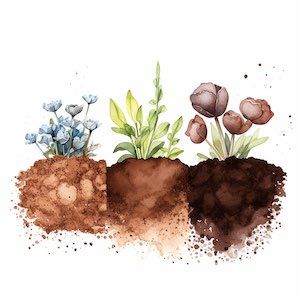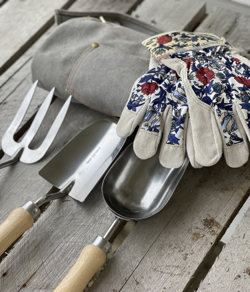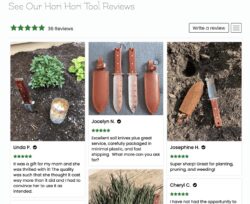Garden Soil Test
The secret to any successful garden lies beneath the surface. Yes, you guessed it, it’s all about the soil! Good soil is the foundation of every healthy garden and understanding your soil can help you tailor your gardening practices to suit its needs. One simple way to assess your soil’s texture, which indicates its sand, silt, and clay content, is by doing a soil ribbon test. In today’s blog post, we will delve into the details of this soil test and discuss how it impacts your gardening game.
The Soil Ribbon Test: How-To
The ribbon test is a simple, quick, and effective way to determine the composition of your garden soil. It’s a fun, hands-on activity that can be done with just your hands and a little bit of water. Here’s a step-by-step guide on how to do it:
Step 1: Collect the Soil Sample
Choose a spot in your garden that is representative of the soil in the entire area. Dig up a sample that’s about 6 inches deep to ensure it is a good representation of the topsoil where most of your plant roots will be. Make sure your sample is free from any organic material like leaves, twigs, or rocks.
Step 2: Prepare the Soil
Spread the soil out and let it dry. Then, remove any small stones, roots, or other debris. Once it’s clean, take about a cup of soil and crush it until it is a fine powder.
Step 3: The Ribbon Test
Moisten the soil sample by adding water slowly and kneading it until it feels like playdough. Take a small handful and begin to squeeze it out between your thumb and fingers to form a ribbon. Try to make the ribbon as long and thin as possible. The length of the ribbon before it breaks will give you a rough idea of your soil’s clay content.
Understanding Your Results
- Sand: If the soil doesn’t form a ribbon and feels gritty, it is likely sandy soil. Sandy soil has large particles, drains quickly, but doesn’t hold onto nutrients well.
- Silt: If your soil forms a short ribbon of about an inch or less before it breaks off and feels smooth but not sticky, it is likely silty. Silty soil is fertile and drains more slowly than sandy soil, but it can compact easily.
- Clay: If your soil forms a long ribbon of two inches or more before it breaks, it is likely clay soil. Clay soil has the smallest particles, which makes it slow-draining and high in nutrients. However, it can be heavy and hard for plant roots to penetrate when dry.
The Impact on Your Gardening Practices
Understanding your soil’s texture allows you to make informed decisions about plant selection, watering, and amendment practices.
Plant Selection: Some plants thrive in specific soil types. For instance, root vegetables do not fare well in heavy clay soils but will thrive in loose sandy soils. On the other hand, many perennials prefer clay soils due to their high nutrient content.
Watering: Sandy soils drain fast and dry out quickly, so they may need more frequent watering. Conversely, clay soils hold onto water, which means you should be careful not to overwater plants in this soil.
Soil Amendments: If your soil is too sandy, adding organic matter like compost can help improve its water and nutrient holding capacity. For clay soils, adding compost and coarse sand can improve its structure and drainage.
Improving Soil Fertility: Regardless of the type, almost all soil can benefit from organic matter. Adding compost or well-rotted manure can enhance nutrient content, improve water-holding capacity in sandy soil, and promote better drainage in clay soil. Regularly adding organic matter can gradually transform your garden soil into a rich, fertile loam that’s ideal for plant growth.
Fertilization: Different soil types may require different fertilization strategies. For instance, sandy soils might need more frequent, lower dose fertilizations because nutrients can quickly leach out with watering. On the other hand, clay soils might require less frequent but potentially higher dose fertilizations due to their natural nutrient holding capacity.
pH Correction: This simple ribbon test doesn’t inform you about your soil’s pH. However, it’s essential to know, as certain nutrients can only be absorbed by plants at certain pH levels. Generally, soils tend to become more acidic over time, especially if you use a lot of nitrogen fertilizer. The solution can be as simple as adding lime to raise pH or sulfur to lower it, depending on your soil’s needs.
Preventing Soil Compaction: Particularly for clay and silty soils, it’s crucial to avoid overworking the soil when wet as it can lead to compaction, making it difficult for plant roots to grow. A simple strategy is to add a layer of mulch which will prevent compaction from rain and help the soil retain its moisture.
In conclusion, the soil ribbon test is a simple but effective way to understand your garden soil better. It provides valuable insights that help you adjust your gardening practices for optimum plant health and productivity. Remember, gardening is a journey of discovery and learning. The more we understand, the better we become at nurturing the plants in our care. So, get your hands dirty, have fun, and keep growing!













